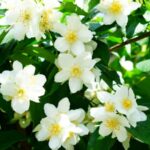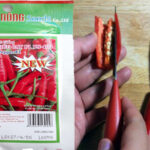Schefflera Octophylla Lour, commonly known as Five-Fingered Schefflera, is a herbaceous plant that typically grows to a height of 1.5 to 2 meters, boasting lush green leaves all year round. The distinctive feature of this plant is its leaves, with each comprising five distinct lobes, representing the five fundamental elements of nature: metal, wood, water, fire, and earth. This symbolism not only signifies balance and harmony in nature but also stands for unity and happiness within families.
Beyond its spiritual significance, the Five-Fingered Schefflera offers numerous practical benefits for daily life. It is believed to bring financial luck and career success, helping homeowners prosper in their endeavors, attract wealth, and attain a stable social status. Additionally, the plant is known for its mosquito-repelling properties, making living spaces more comfortable and serene. In essence, the Five-Fingered Schefflera is not just a visually appealing houseplant but also a trusted companion for every household.
To ensure the Schefflera remains vibrant and healthy throughout the year, proper autumn care is essential. You can follow the “3-More-1-Less” rule to promote vigorous and robust growth.
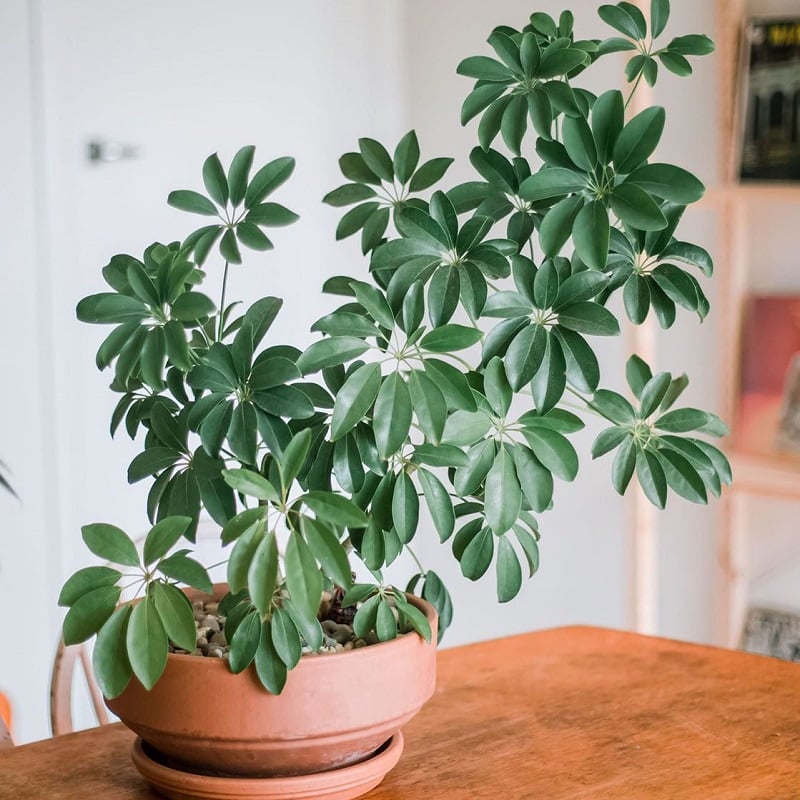
Ensure your Five-Fingered Schefflera thrives all year round with proper autumn care.
Water More
Native to subtropical regions, the Five-Fingered Schefflera thrives in humid environments. To encourage rapid growth and maintain glossy leaves, adequate soil moisture is crucial. Although temperatures begin to drop in September, the weather remains warm and humid. During this period, ensure the soil is consistently moist. Water the plant when the soil starts to dry out, but be careful not to overwater or let the soil become too dry, as this may cause leaf discoloration.
Use Slightly Acidic Water
Slightly acidic water is beneficial for the plant’s growth and helps prevent soil compaction while maintaining good drainage. Don’t forget to mist the leaves during dry spells to maintain humidity and enhance the plant’s vitality.
Take Advantage of Natural Rainfall
September also marks the beginning of the rainy season, so make the most of it for your Five-Fingered Schefflera. When it rains, you can leave your plant outdoors to soak up the natural rainwater, which will help loosen the soil and create favorable conditions for its growth.
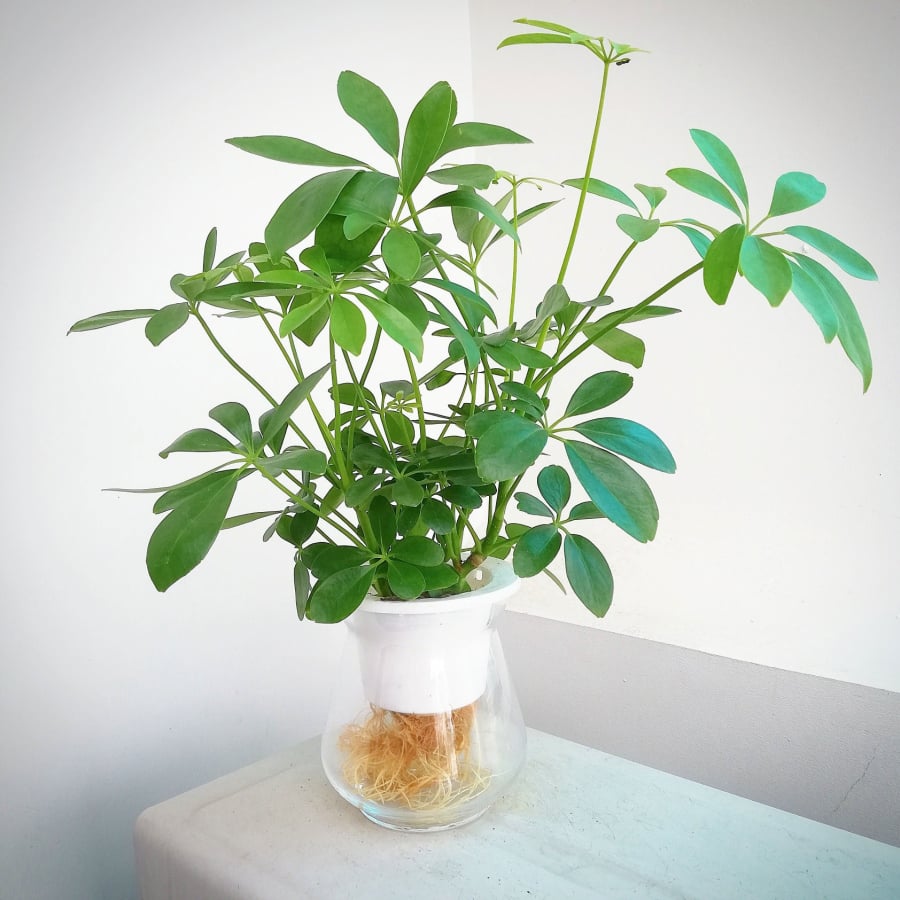
September’s rainy season provides an opportunity to utilize natural rainwater for your Five-Fingered Schefflera.
Fertilize More
The Five-Fingered Schefflera is sensitive and requires special care, particularly when it comes to nutrition. It exhibits vigorous growth during summer and autumn, making proper fertilization crucial for its development. When fertilizing, pay close attention to the amount of fertilizer applied. Avoid over-fertilization and the use of highly concentrated or unfermented organic fertilizers, as these can harm the plant, scorch the roots, and weaken its vitality.
Additionally, refrain from excessive nitrogen application in September, despite it being a period of active growth. When temperatures drop during winter, rapid growth and the presence of tender new shoots can significantly increase the risk of frost damage.
Therefore, the best approach during this phase is to use multi-element fertilizers with a balanced ratio of nitrogen, phosphorus, and potassium. You can also opt for fermented organic fertilizers, which not only promote growth but also strengthen the branches and root system. This type of fertilizer helps the plant withstand the cold winter months and sets the foundation for sustainable future growth.
Prune More
The Five-Fingered Schefflera, with its exceptional growth potential, requires periodic pruning to maintain its beauty and harmony in your living space. Neglecting pruning can lead to an unruly and aesthetically unpleasing appearance. Through continuous pruning and shaping, the Schefflera will grow stronger and bring elegance to your home. Here are some effective pruning techniques:
Regular Pruning
When you start pruning, the first step is to remove any diseased or withered branches, along with yellow leaves, to maintain the plant’s health. Additionally, trimming dense branches will improve airflow and allow natural light to reach all parts of the plant, thereby promoting growth.
Furthermore, sensible pruning helps reduce nutrient depletion, allowing the plant to focus its nutrients on developing branches, thus optimizing its vitality.
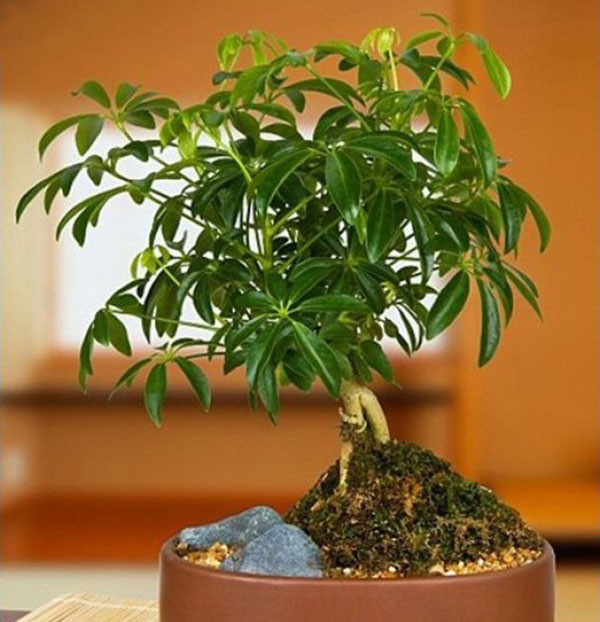
Begin pruning by removing diseased branches and yellow leaves to maintain the health of your Five-Fingered Schefflera.
Pruning for Shaping
To shape your Five-Fingered Schefflera, you can remove the apical buds, which will encourage the growth of lateral branches, resulting in a fuller and more rounded appearance. This practice improves the balance between height and shape, adding a touch of perfection to your space.
Pruning is not just about aesthetics but also plays a vital role in maintaining the health and sustainable growth of the Five-Fingered Schefflera.
Provide Less Sunlight
While the Five-Fingered Schefflera thrives in bright light, it favors soft, scattered sunlight. When exposed to this type of light, the plant’s leaves will grow robustly, exhibiting a deep green color and robust health. The branches will also become sturdy, contributing to the plant’s overall beauty. However, intense sunlight can lead to sunburn, causing leaf margins to turn yellow and hindering the plant’s growth.
In addition to light adjustment, early September is also an ideal time to repot your Five-Fingered Schefflera. Opt for a soft, well-drained, and airy soil mix to promote vigorous growth and prepare the plant for the upcoming cold winter months. Proper care will ensure your plant stays healthy and beautiful throughout the winter season.
The ‘1 Light, 1 Diligent, 1 Few, 1 Many’ Principle for Jasmine Care in August
“To bring out the best in jasmine, growers often adhere to the principle of ‘One Light, One Diligent, One Less, One More’. This time-honored principle is a testament to the art of cultivation and the understanding of nature’s nuances. So, what does this principle entail, and why is it so widely embraced?”
“Post-Tet, Roses Stay Blooming with These Care Tips”
Introducing the ultimate guide to rose care from Bach Hoa XANH – your trusted companion for a vibrant and flourishing home this Tet holiday and beyond. Immerse yourself in the world of rose care as we unveil the secrets to maintaining their beauty long after the festive season. Prepare to be captivated by the allure of these exquisite flowers and discover the joy of admiring their vibrant hues all year round.
What is an Ion Electrolysis Water Filter? Is it any good? Why is it so expensive?
“Alkaline water ionizers are innovative appliances that transform your water into a pure and healthy beverage, packed with beneficial electrolytes and a beauty boost for your skin. But what are these machines, exactly? Are they worth the investment, and why are they priced higher than your average water filter? Let’s dive into the world of alkaline water ionizers with Bach Hoa XANH and uncover all there is to know!”

























